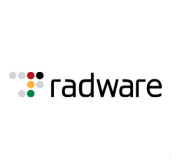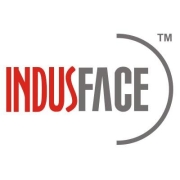Distributed Denial-of-Service Protection safeguards online services by mitigating attacks that overwhelm resources, ensuring service continuity and security for businesses.
Distributed Denial-of-Service Protection involves a series of measures designed to defend against large-scale network attacks. These solutions filter malicious traffic without affecting user experience. Advanced detection and real-time monitoring are critical for timely responses. With comprehensive attack analytics, businesses can fortify their defenses, ensuring operational integrity and customer satisfaction.
What are the critical features of Distributed Denial-of-Service Protection?In sectors like e-commerce, Distributed Denial-of-Service Protection is crucial in maintaining service uptime during peak traffic and potential attack periods. Financial institutions leverage these solutions to safeguard sensitive transactions and data integrity. For media and gaming, uninterrupted service translates to better user retention and satisfaction.
Mitigating DDoS attacks is essential for protecting digital assets and maintaining seamless service operations. Distributed Denial-of-Service Protection ensures organizations can operate without disruption, offering a secure and reliable user experience.
| Product | Market Share (%) |
|---|---|
| Cloudflare | 18.8% |
| Arbor DDoS | 11.7% |
| Radware DDoS | 8.4% |
| Other | 61.1% |



















































While DDoS is not a true virus, it uses malware (malicious software) to affect normal computer operations. Malware can come in the form of viruses, Trojans, spyware, and adware, and other types, and is used by hackers to gain unauthorized access to systems when carrying out DDoS attacks. A DDoS attack incorporates malicious programs in order to target the victim, making the virus more effective and destructive. Malware affects vulnerable devices by turning them into bots. Once the devices have been modified, a DDoS attack is launched as part of the botnet.
A DDoS attack is dangerous because it can cause major disruptions and become a threat to business continuity. These types of attacks affect mission-critical applications that organizations rely on, such as email, CRM systems, salesforce automations, and many other daily business operations. DDoS attacks can force companies to spend fortunes on repairs, can affect consumer trust, can lead to lost revenue, and can damage an organization’s reputation. When applications become unavailable or a public-facing website is down, productivity suffers. Unfortunately, one DDoS attack means that more attacks are likely expected to continue until more robust defense solutions are deployed.
Identifying the difference between a legitimate traffic spike and a DDoS attack can be challenging without proper tools. To differentiate, you should monitor your traffic patterns regularly to establish a baseline of normal activity. During a suspected attack, you will notice an unusual increase in traffic that disregards time, origin, or behavior patterns. Implement solutions like traffic analysis and anomaly detection systems that can alert you to deviations and provide insights into traffic sources and types.
What are the key features to look for in a DDoS Protection solution?When selecting a DDoS Protection solution, look for features such as automatic threat detection and mitigation, scalability to handle large attacks, real-time monitoring and alerts, and global network coverage. It should offer integration with your existing infrastructure and provide detailed reports and analytics. Additionally, 24/7 support and a proven track record in handling complex DDoS scenarios are essential for maintaining business continuity.
How does DDoS Protection work with cloud-based applications?DDoS Protection for cloud-based applications typically involves using cloud-based mitigation providers that absorb and filter malicious traffic before it reaches your application servers. These solutions leverage the scalability and distributed nature of the cloud to effectively handle volumetric attacks. By placing DDoS Protection at the network edge, you ensure your cloud applications remain accessible to legitimate users while blocking potentially harmful traffic.
Why is proactive DDoS mitigation important for businesses?Proactive DDoS mitigation is crucial because it helps prevent downtime, protects revenue, and maintains customer trust. By implementing measures like traffic analysis and using DDoS Protection services before an attack occurs, you can reduce the response time and financial impact of an attack. Proactive measures also enhance your overall security posture by providing insights into evolving threats and vulnerabilities, enabling you to tailor your defenses accordingly.
Can DDoS Protection solutions be integrated with existing cybersecurity systems?Yes, DDoS Protection solutions can typically be integrated with existing cybersecurity systems. Integration improves overall resilience by creating a more comprehensive security strategy. Many DDoS Protection providers offer APIs and compatible modules to work seamlessly with firewalls, intrusion detection systems, and security information and event management tools. By synchronizing DDoS defenses with other security measures, you capitalize on shared intelligence and ensure a coordinated response across your security infrastructure.